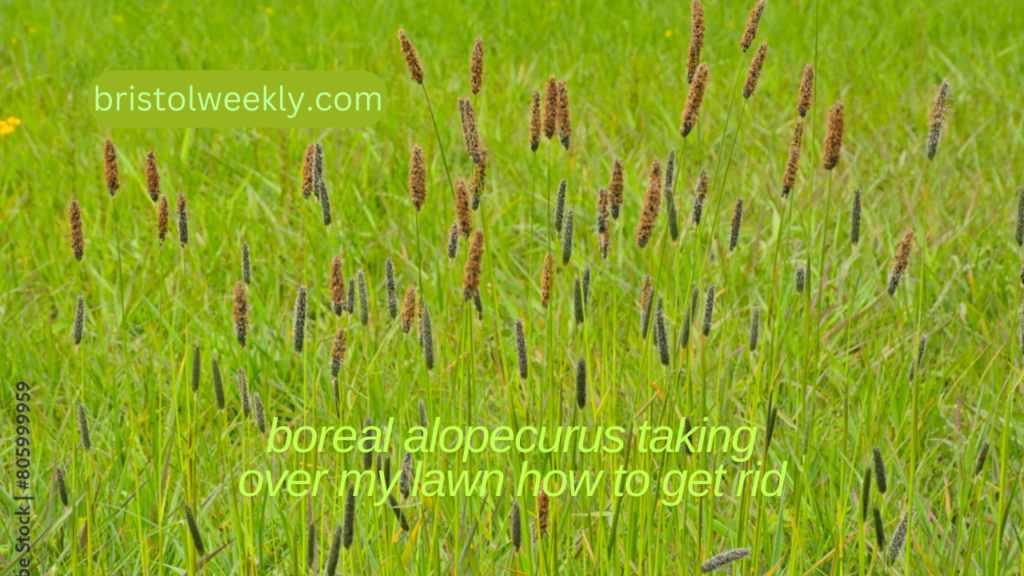If you’re dealing with boreal alopecurus taking over my lawn how to get rid, you’re not alone. This invasive grass species, also known as Alopecurus alpinus (Boreal Foxtail), can rapidly overtake your lawn and become a real problem. If you’re wondering how to get rid ofmalopecurus alpinus boreal in lawn, there are several methods you can employ to tackle this invasive grass and restore your lawn to its healthy state. Read on for a complete guide.
Understanding Boreal Alopecurus
Boreal alopecurus, or Alopecurus alpinus, is a perennial grass native to cooler climates. It thrives in moist, fertile soils and spreads aggressively, often overtaking lawns in areas that are not properly maintained. boreal alopecurus taking over my lawn how to get rid can lead to unsightly patches and a reduction in biodiversity, as this grass crowds out other desirable plants and grasses.
If you’ve noticed boreal alopecurus taking over my lawn, it’s essential to act fast. The longer it is left unchecked, the harder it will be to remove.
How to Get Rid of Boreal Alopecurus in Your Lawn
Dealing with how to get rid ofmalopecurus alpinus boreal in lawn involves a combination of manual, cultural, and chemical methods. Here’s how to start:
Manual Removal
The most effective way to control Boreal Alopecurus in its early stages is manual removal. This is especially useful if boreal alopecurus taking over my lawn how to get rid is limited to small patches.
- Step-by-step process:
- Water the affected area to soften the soil.
- Use a weeding tool or your hands to pull up the grass, ensuring that the entire root system is removed.
- Dispose of the plants properly to prevent them from regrowing or reseeding.
While this method works well for small infestations, for larger areas, additional measures may be necessary.
Cultural Control Practices
Proper lawn care is essential in preventing how to get rid ofmalopecurus alpinus boreal in lawn. Cultural practices like aeration, fertilization, and mowing can help your lawn become more competitive and make it harder for invasive grasses like Alopecurus alpinus to establish themselves.
- Mowing: Keep your grass mowed at an optimal height of 2.5 to 3 inches. Regular mowing, especially before the grass has a chance to seed, prevents boreal alopecurus from spreading.
- Aeration: Aerating your lawn reduces compaction and improves water and nutrient penetration, making it harder for Alopecurus alpinus boreal to thrive.
- Fertilization: Use balanced fertilizers to strengthen your lawn. Healthy grass is less likely to be overtaken by invasive species like boreal alopecurus.
Improve Lawn Drainage
Since boreal alopecurus taking over my lawn how to get rid thrives in wet conditions, improving your lawn’s drainage can make it less hospitable for this invasive grass. You can achieve this by aerating the soil, adding organic matter, or even installing a drainage system if necessary.
By addressing how to get rid ofmalopecurus alpinus boreal in lawn through better soil health and drainage, you create an environment that promotes the growth of healthier grasses and reduces the chance of Boreal Alopecurus invading your lawn.
Herbicide Application
In some cases, you may need to use herbicides to control how to get rid ofmalopecurus alpinus boreal in lawn. There are two types of herbicides you can use:
- Pre-emergent herbicides: These prevent Alopecurus alpinus boreal seeds from germinating in the spring. Applying them early, before the grass has a chance to sprout, can help manage the spread of this invasive species.
- Post-emergent herbicides: If the grass has already grown, use post-emergent herbicides designed to target grasses. Be sure to choose a selective herbicide that won’t harm your existing turfgrass.
When using herbicides, follow the manufacturer’s instructions carefully to avoid harming your lawn and to achieve the best results.
Reseeding and Lawn Recovery
After you’ve managed to remove boreal alopecurus from your lawn, it’s important to reseed or sod the affected areas to restore your lawn’s health. This helps fill in bare patches and prevents the invasive grass from coming back.
- Reseeding: Choose a turfgrass variety that suits your climate and soil. Water regularly to promote germination and prevent boreal alopecurus from regrowing.
- Sodding: If you need faster results, consider laying sod in the affected areas. Make sure the soil is prepared and free of any remaining Alopecurus alpinus before laying the sod.
FAQs About Boreal Alopecurus Control
How can I prevent boreal alopecurus taking over my lawn in the future?
To prevent future infestations, maintain a healthy lawn through proper watering, fertilization, and mowing practices. Aeration and improving soil drainage also reduce the chances of Alopecurus alpinus taking hold.
Is manual removal effective for boreal alopecurus?
Manual removal is effective for small patches but may not be sufficient for larger infestations. You may need to combine manual removal with other methods, such as herbicide application and cultural control.
Can herbicides completely eliminate Alopecurus alpinus boreal?
Herbicides can be effective, but they may not completely eradicate the grass if not used correctly. For the best results, combine herbicide treatment with manual removal and proper lawn care practices.
When is the best time to apply herbicides to control boreal alopecurus?
Pre-emergent herbicides should be applied in early spring before Alopecurus alpinus seeds start to germinate. Post-emergent herbicides should be applied when the grass is actively growing but not under stress.
Conclusion
If you’ve noticed boreal alopecurus taking over my lawn how to get rid, it’s time to take action. This invasive grass can spread quickly and damage your lawn, but with the right approach, you can regain control. Whether through manual removal, proper lawn care, herbicide application, or reseeding, there are several effective ways to tackle how to get rid ofmalopecurus alpinus boreal in lawn. With persistence and the right methods, your lawn can thrive once again.
